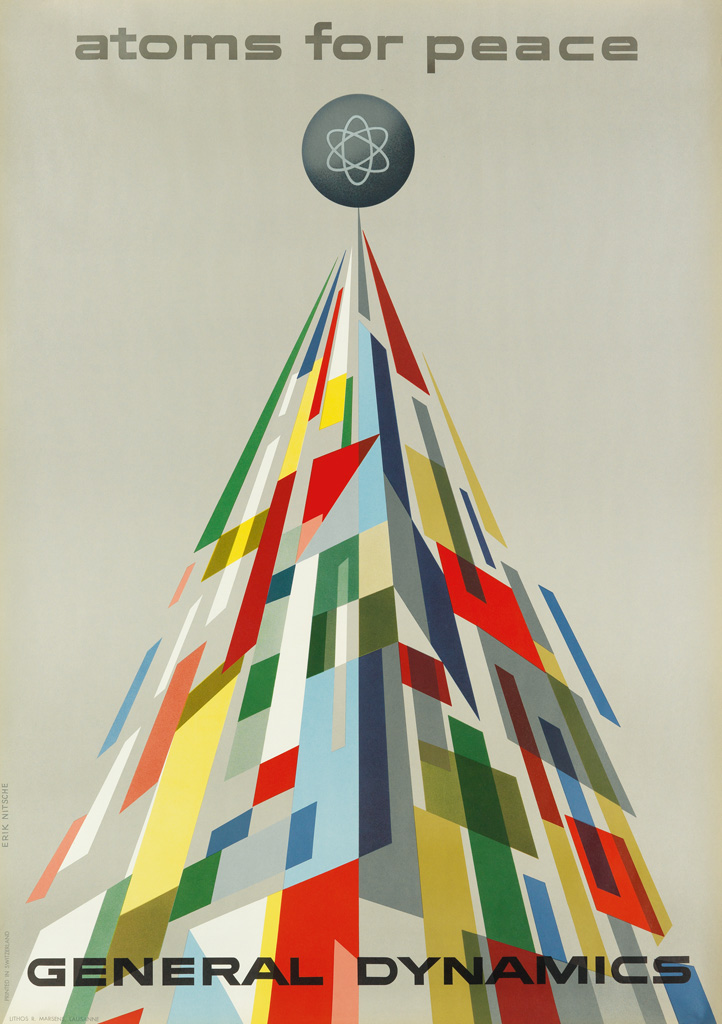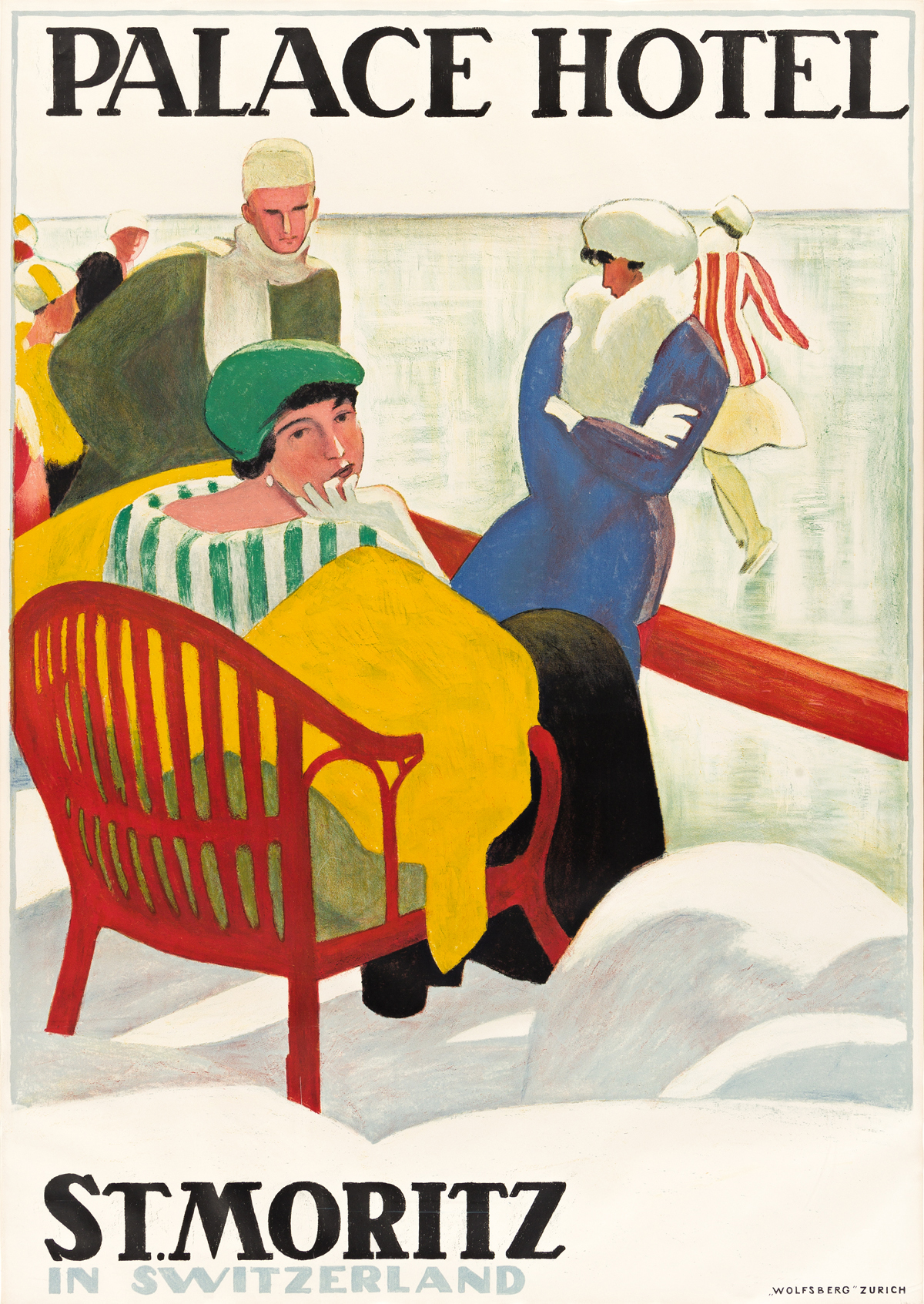Collecting Vintage Winter Sports Posters
The modern Olympic Games were first held in 1896, with an appropriate historical nod to antiquity, in Athens, Greece. It wasn’t until 28 years later, in 1924, that the first Winter Olympic Games would be hosted in Chamonix, Switzerland. Today, as the world sits transfixed to their televisions watching the competitors of the 2022 Beijing Winter Olympics showcase startling performances, one might well wonder about the history of winter sports and how they were originally marketed to the public.
Since the waning years of the nineteenth-century European transportation companies (originally, and specifically train lines) began marketing winter getaways to the mountains. In addition to touting the magnificent scenery, much of which was not widely known at the time, these early advertisers (who were, in effect, by modern standards, influencers) began to market the concept of sports which could be undertaken in the alpine and snowy climes of some of Europe’s highest mountain ranges.
General Winter-Sports Destination Posters
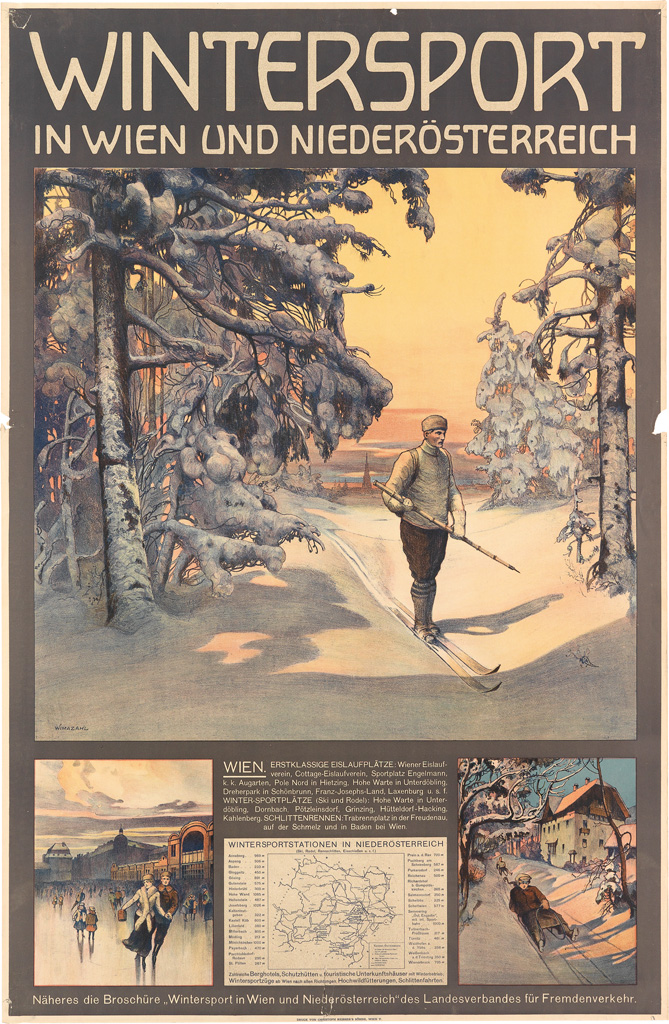
In our earliest example here we have an Austrian poster, circa 1908, which shows a man skiing in the magnificent winter wonderland of the countryside near Vienna. Also depicted are a modern and attractive skating pavilion and people sledding along a country lane outside a village in lower Austria.
Although a small handful of posters exist which do, like the previous example, highlight a multitude of winter ventures, the majority of images focus on a single activity such as Winter-in-Davos, 1914. Here, Burkhard Mangold depicts a couple gracefully dancing on the ice at the exotic Swiss resort of Davos. This brightly-colored, carefree image is one of his most fluid designs, in which the swirls on the ice indicate the movement of the skaters, who themselves are moving too fast to be completely contained within the poster itself.

Two years later Mangold also designed one of the single most impressive and all-inclusive, winter sports promotions of its era. The poster is, in fact, a five-panel image, in which each panel represents a different letter in the name of the Swiss resort Davos. Each of the panels was intended to be a poster in its own right, as well as being part of the larger concept. Here, combining Davos’ old role, as a high altitude spa, with its new incarnation as a winter resort, we have the “Winterkuren” surrounded by the latest, leisure activities that could be pursued. It is a lithographic tour-de-force, wherein the strong typography (cleverly arranged so that each sheet is a different letter) is offset by the delicate, subtle colors in each image. Sleigh riding, ice skating, skiing, sledding and the overall “Winter Cure” are depicted in a predominantly icy gray/blue, but each image has bursts of color such as pink, yellow, beige, green and purple.
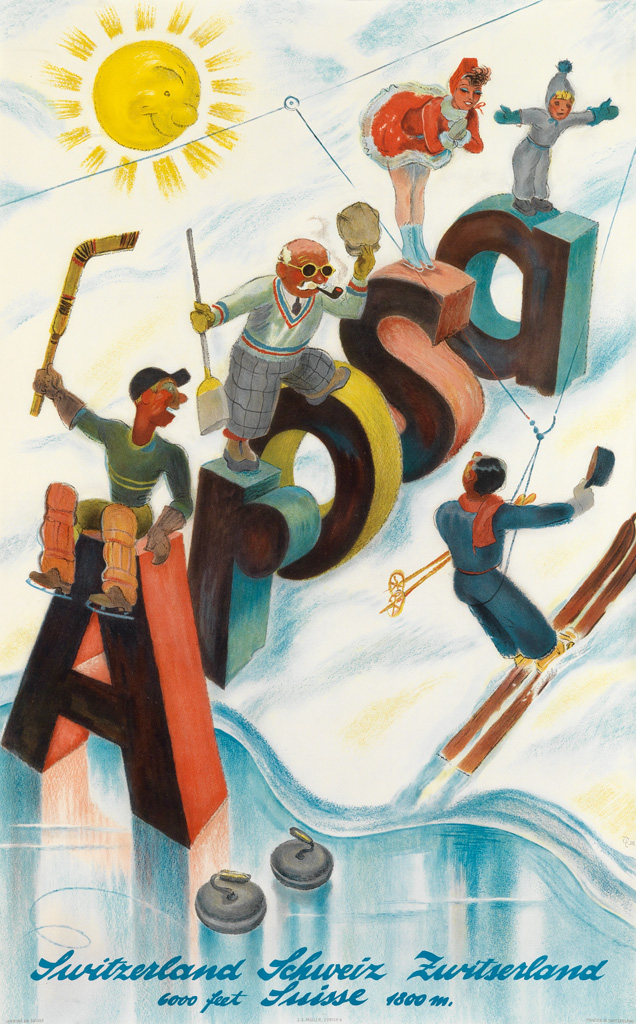
Hugo Laubi, Arosa, 1938. Sold for $2,000 in 2016. 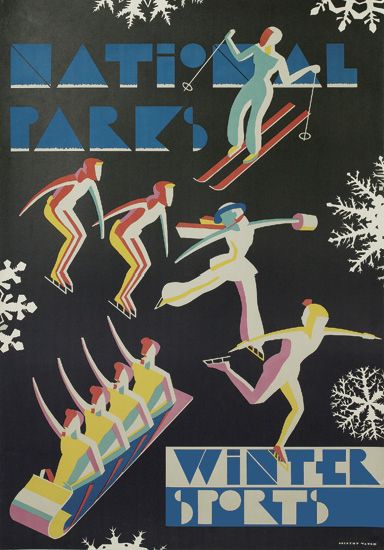
Dorothy Waugh, National Parks / Winter Sports, circa 1934. Sold for $660 in 2013.
The above left 1938 poster by the talented and ubiquitous Swiss poster artist Hugo Laubi shows a myriad of winter sports available to tourists including hockey, skiing, skating and curling. In the mid-1930s Dorothy Waugh (a designer who managed Alfred A. Knopf’s children’s book department) designed a number of posters advertising winter activities in the State Parks of the United States. The one at the right is particularly charming and wonderful, encompassing in its colorful way, skiing, skating and sledding.
Ski Jumping
“In 1921, the International Olympic Committee voted to stage ‘International Sports Week 1924’ in Chamonix, France. This event was a complete success and was retroactively named the First Olympic Winter Games” The 1924 Olympic Games were held in Paris, and the French Railway commissioned several posters promoting the events of these new “winter games.”
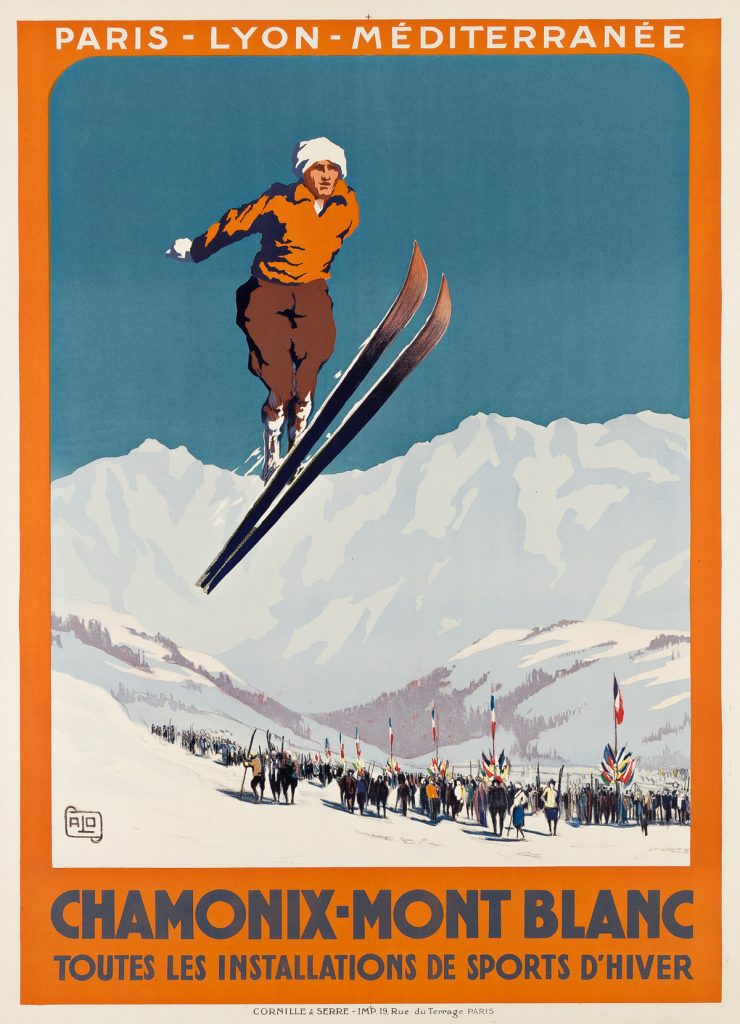
Alo, A Chamonix – Mont Blanc, 1927. At Auction February 24. Estimate $3,000 to $4,000. 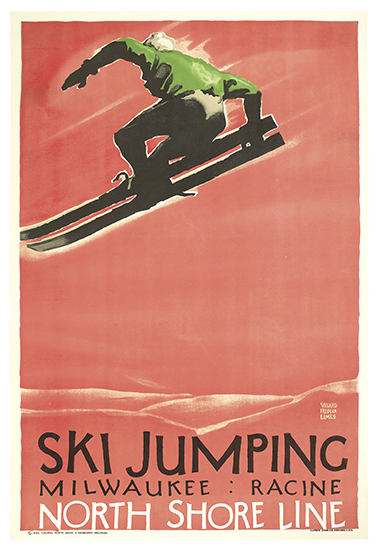
Willard Frederic Elmes, Ski Jumping / North Shore Line, 1928. Sold for $3,840 in 2009.
Charles Hallo [Alo] designed this poster on the left for the first Olympic Winter Games—one of five created for the games, all of which were printed by PLM Railway rather than the Olympic Committee. It is a wonderful depiction of a ski jumper taking to the skies above a crowd and the flags of competing nations. Clearly ski jumping as a sport was becoming more popular around the world as this 1928 poster by Willard Frederic Elmes for the North Shore Line in Chicago and Wisconsin demonstrates. Although almost entirely remembered for his design work on Mather Work Incentive posters, Elmes also designed posters for Chicago’s Rapid Transit Company and North Shore Line railway. This rare poster has only come up for auction once in the last 25 years.
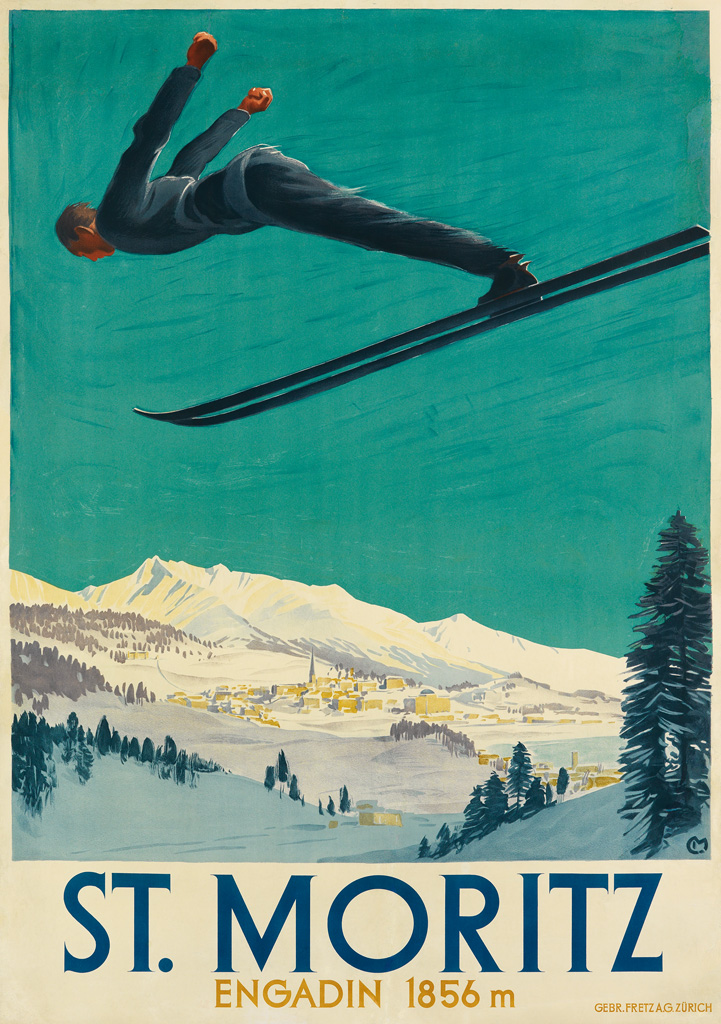
Not just wedded to the Olympic Games, ski jumping was taking off [no pun intended] across Europe. Here Carl Moos illustrates a jumper mid-flight above the Swiss Alpine Village of St. Moritz. Clearly, even in these early years of the sport, athletes knew just how to get over the front of their skis to maximize their aerodynamics.
Related Reading: Nicholas D. Lowry Shares His Favorite “Unofficial” Vintage Olympic Posters
Ice Sports
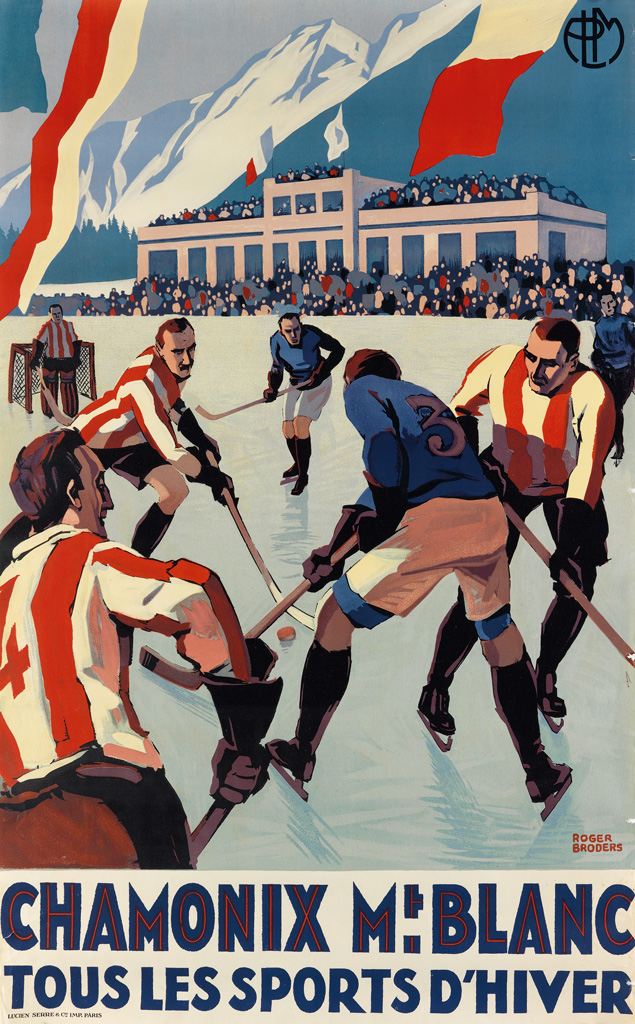
Roger Broders, Chamonix Mt. Blanc, 1930. Sold for $9,100 in 2017. 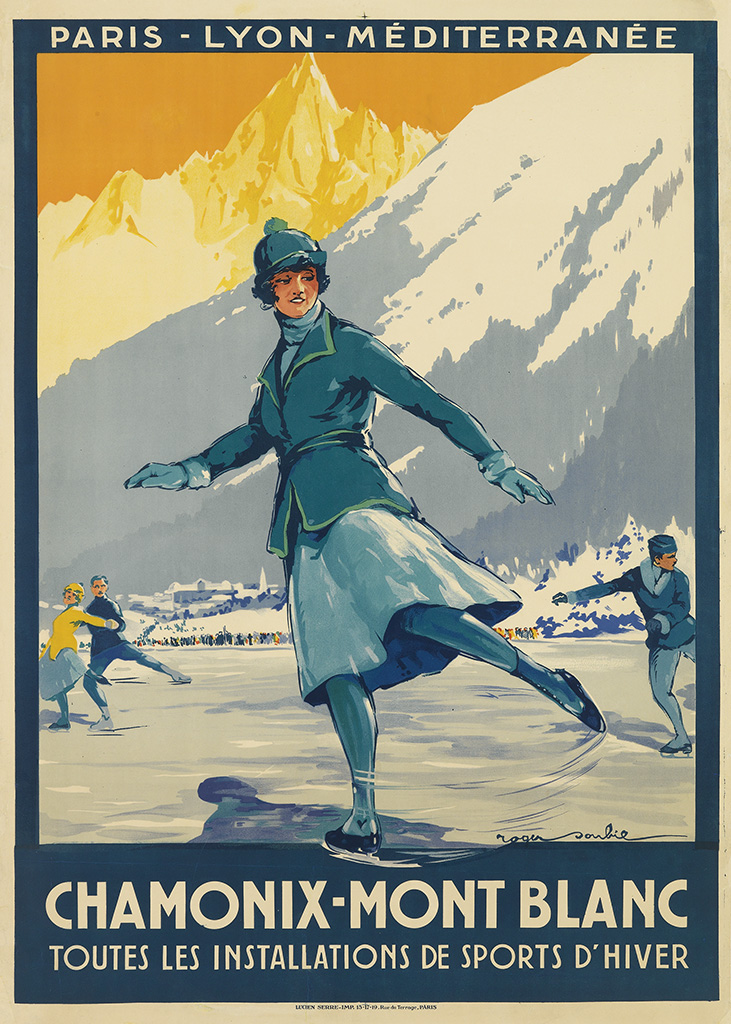
Roger Soubie, Chamonix – Mt. Blanc, 1924. Sold for $2,340 in 2013.
Roger Broders designed a number of notable skiing posters, but he also designed this wonderful, Art Deco ice hockey image in 1930. The decision to hold the first Winter Olympic Games in Chamonix “triggered a period of frenzied construction as rail and road links and hotel development opened up the area to international tourism.” The skating facilities, including the large rink and the building featured on this poster, were constructed prior to the event and delivered to the International Olympic Committee in December 1923. This ice-hockey poster, Broders’ most action-filled image, is often considered an unofficial Chamonix Olympic poster by collectors. Roger Soubie designed the image of a woman ice skating on a frozen lake surrounded by spectators in 1924, seen left. It is one of the five “official” posters created for the first iteration of the winter games. Each were issued with text variants, sometimes promoting the Olympic Games and sometimes just promoting winter activities in the area.
Bobsledding
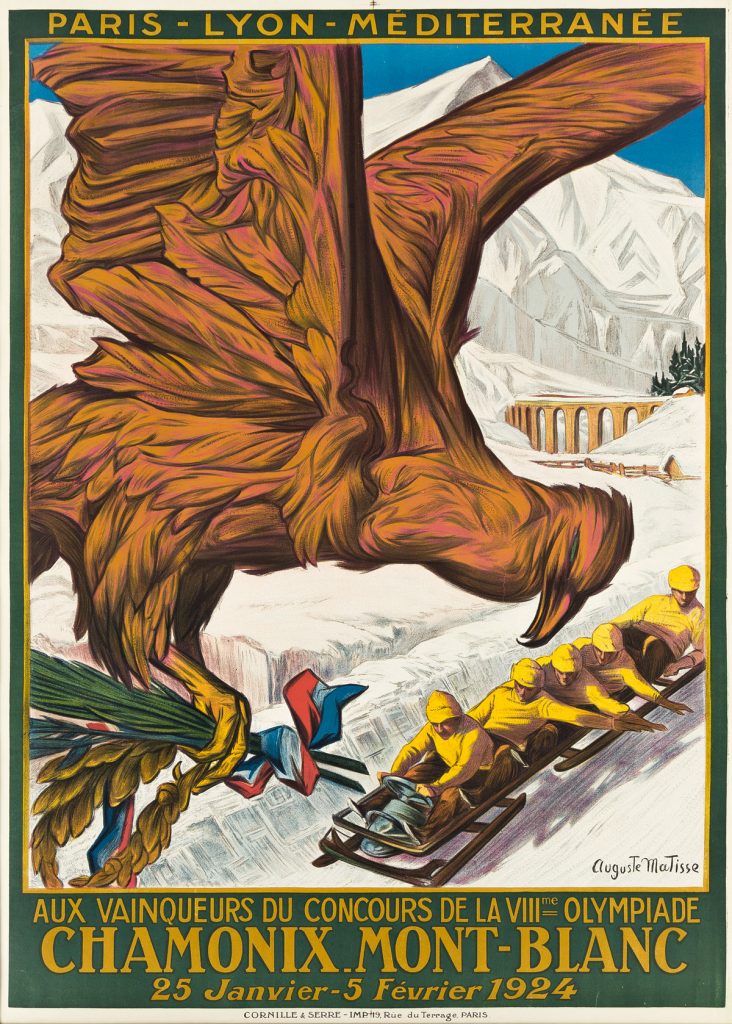
Auguste Matisse, Chamonix Mont – Blanc / VIIIME Olympiade, 1924. Sold for $3,250 in 2021. 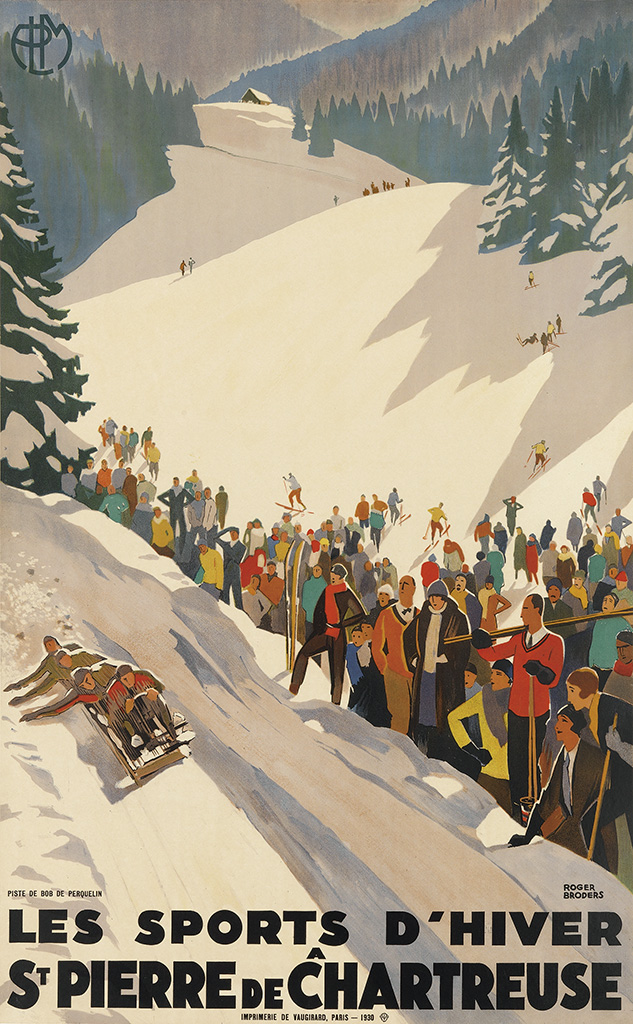
Roger Broders, Les Sports d’Hiver / A St. Pierre de Chartreuse, 1930. Sold for $18,750 in 2013.
Auguste Matisse’s image on the left showcases the bobsled track in one of the five posters commissioned for the first games. Another masterwork of Art Deco design by Broders is the 1930 poster focusing on the bobsled track at the French Alpine resort of Perquelin where a crowd of brightly attired skiers gather on the slope to watch a sled whiz by, pictured left.
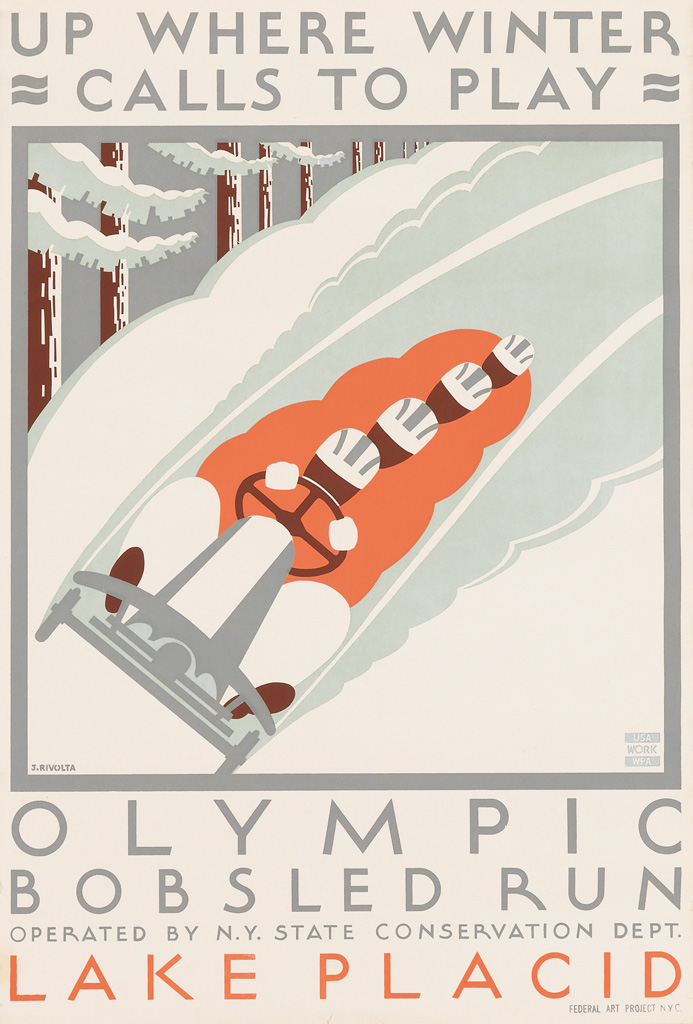
Jack Rivolta, Up Where Winter Calls to Play / Olympic Bobsled Run / Lake Placid, circa 1938. Sold for $7,500 in 2015. 
Roumanie / Bobsleigh-Sky / Sky-Kjöring / Luges / Sinaia, 1930s.
In America, the bobsled run at Lake Placid was built for the 1932 winter Olympic games. In 1938 Jack Rivolta, working for the Federal Art Project which was part of the WPA, designed an exceptional image of a team descending on the track to help promote tourism in the area in the years for the years following the games, pictured right. Even Roumania was getting in on the tourist action of trying to attract foreigners to their mountains in the 1930s; specifically to the town of Sinai in the Bucegi Mountains, where a multitude of winter sporting activities could be found; including bobsledding, skijoring and luging.
Related Reading: WPA Posters: Favorites from a Vintage Posters Specialist
Curling & Skijoring
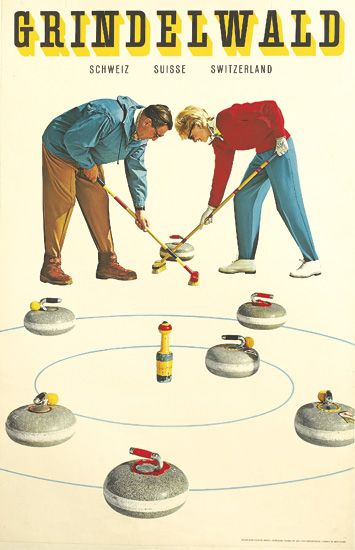
Karl Toggweiler, Grindelwald, circa 1960. Sold for $540 in 2012 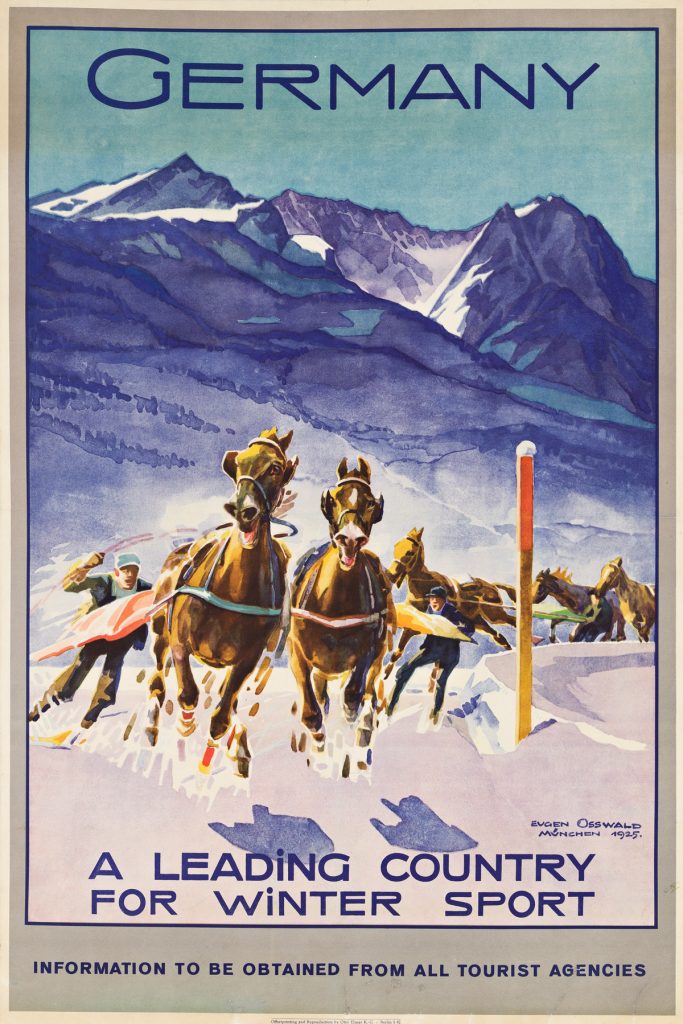
Eugene Osswald, Germany / A Leading Country for Winter Sports, 1925. Sold for $688 in 2021.
There are, in fact, much earlier curling posters than this, by Karl Toggweiler, circa 1960. But this is just such a wonderful image and a curious advertising conceit. My apologies to all curling enthusiasts, but I never imagined the sport would be used to lure tourists to a resort, and especially not a romantic pair of travelers as seen on the right. Skijoring was a demonstration sport once at the Olympic Games, in 1928 when they were held in St. Moritz. This poster on the left, by Eugene Osswald from 1925, shows that the sport, which originated in Scandinavia, was quite popular across the continent.
Do you have a vintage winter sports poster we should take a look at?
Learn about how to consign to an auction, and send us a note about your item.
